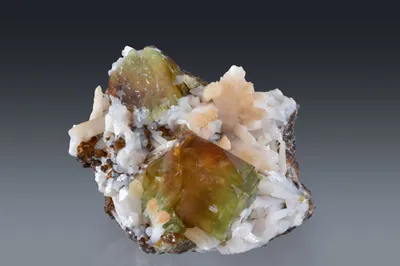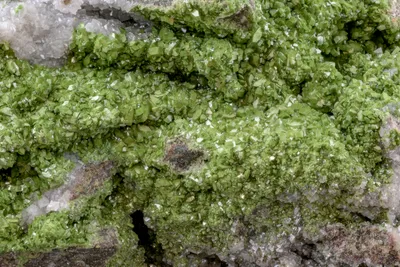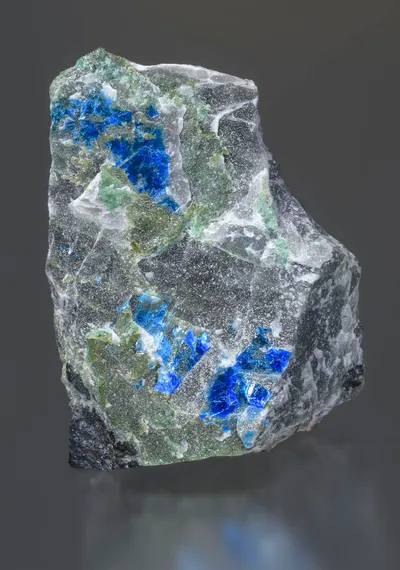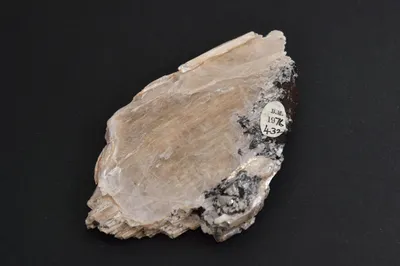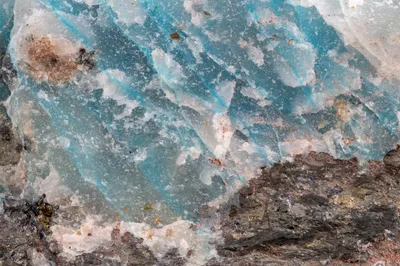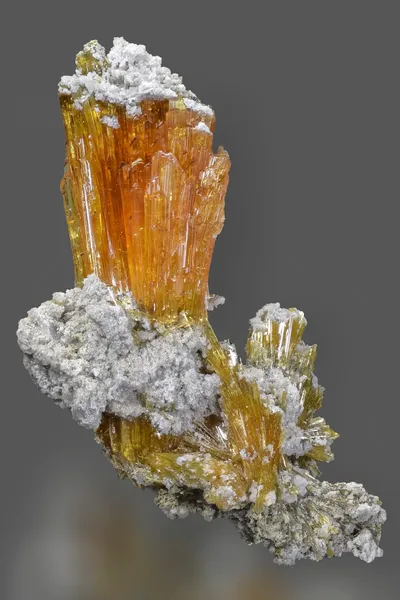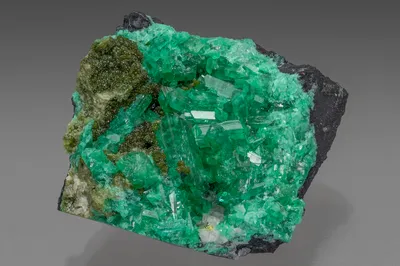Mineral Species
Prosperite
Type Locality
Yes
Composition
CaZn2H(AsO4)2OH
Crystal System
Monoclinic
Status at Tsumeb
Confirmed (type locality)
Abundance
Extremely rare
Distribution
Second oxidation zone
Paragenesis
Supergene
Entry Number
Species; TSNB288
Type Mineralogy
In 1976 renowned Toronto-based mineral dealer, Prosper J. Williams (1910-2001), took two specimens of an unidentified mineral to the Royal Ontario Museum for study. The unidentified phase was found to be a hydroxyl-bearing hydrogen calcium zinc arsenate which was subsequently approved as a new mineral, IMA 1978-028, and named prosperite, for its discoverer (Gait et al. 1979). The crystal structure of prosperite was resolved by Keller et al. (1982b). Type material is conserved at the Natural History Museum, London (BM.1978,19 and BM.1982,72), the Smithsonian Institution, Washington D.C. (catalogue numbers 143732 and 143743), the Royal Ontario Museum, Toronto (M35388 and M35391) and the Institut für Mineralogie und Kristallchemie, Universität Stuttgart, Germany (catalogue number ST-78-28).
General Notes
Prosperite occurs as radiating groups of slender, white to colourless crystals to 10 mm in length, and 1 mm in diameter. The lustre is "… brilliant vitreous to silky." The type material consists of oxidising chalcocite ore in which two types of vugs were observed.
- Vugs lined with emerald-green conichalcite, containing prosperite and pale, blue-green rosettes of bladed adamite crystals.
- Vugs lined with dull green druses of Cu-rich austinite (40 mol % conichalcite) with prosperite and adamite.
The chalcocite in the matrix contains minute blebs of silver-amalgam, and cuprite was also identified on the type material. Gait et al. (1979) tentatively suggested the following paragenetic sequence for gaitite (related to Keller’s (1977) sequence II/4) but conceded that this was provisional due to the limited amount of study material:
primary sulphides >> (conichalcite + austinite) >> adamite >> prosperite
Independently, in Germany, Paul Keller had also encountered prosperite and provided Gait et al. (1979) with the following proposed paragenesis:
chalcocite >> adamite (light brown) >> adamite [green; = zincolivenite (?)] >> prosperite >> "other new minerals"
At that time, Keller and co-workers were in the process of describing several new minerals from the extraordinary paragenesis discovered in the East 9 Pillar on 31 Level. So while the location from which the prosperite type material was recovered was unknown to Gait et al. (1979), in the light of subsequent publications it is highly probable that it originated from that same section of the mine.
In the ensuing three years the following new minerals were described from this same assemblage: gaitite (Sturman and Dunn 1980); helmutwinklerite (Süsse and Schnorrer 1980); koritnigite (Keller et al. 1979d); johillerite (Keller et al. 1982a); o’danielite (Keller et al. 1981d); warikahnite (Keller et al. 1979b).
During the study and description of prosperite (Gait et al. 1979) a mineral initially identified as talmessite was found on the same specimen, forming coatings on the prosperite and other minerals. These "talmessite" crystals were strongly zoned, however, with a wide variation in the Mg:Zn ratio and with a dominance of zinc (over magnesium); they were described as the new mineral gaitite by Sturman and Dunn (1980).
Keller and Bartelke (1982; page 145) proposed a complex paragenetic sequence encompassing these and other minerals from the East 9 Pillar assemblage on 31 Level. The sequence is essentially an expanded version of Keller’s (1977) sequence "II/4" with the minerals believed to have crystallised under acidic conditions (pH < 5) and a medium oxidation potential.
According to Gebhard (1999) a second find of prosperite, also on 31 Level, was associated with austinite, baryte, conichalcite and quartz.
Associated Minerals
adamite; austinite; baryte; chalcocite; claudetite (?); conichalcite; cuprite; gaitite; helmutwinklerite; hörnesite; johillerite; keyite; koritnigite; köttigite; lavendulan; leiteite; ludlockite; o’danielite; schultenite; silver; stranskiite; warikahnite; zincolivenite
